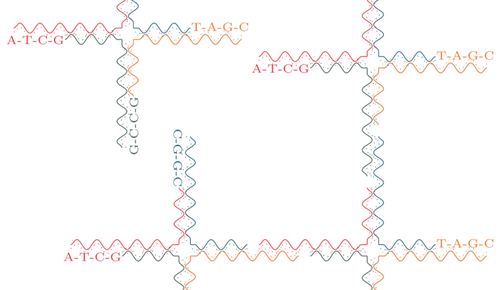DNA Computing

The idea of DNA computation originally came from Leonard Adleman of the University of Southern California in 1994. Adleman showed in a proof of concept that DNA can be used for programming. This proof of concept was that he used DNA to solve an instance of the Hamilton Path problem. Since Adleman's first experiment, there has been great progress and it has been proven that various Turing machines can be produced.
Initially, interest in this novel technology was in solving "NP-heavy" problems. Very soon, however, it was found that those problems were not so easy to be solved with the help of DNA computers.
Neverless, according to current knowledge, DNA has unique properties that make it a useful nano-sized building material. The use of DNA makes it possible to carry out calculations, with which conditional behavior of particles can be implemented. This can be used to develop efficient ways to recognize and, if necessary, treat diseases wisely.
The approach we use utilizes symmetric interwoven DNA strands, often called tiles. These find themselves under suitable conditions independently and begin to adhere to each other. If suitable tiles are created, structures which have desirable properties can be build in a complex self-assembly process in a controlled manner.
In the future, this technique could be used to assist in the generation of nanodevices or even to create entire networks of nanorobots.
See also: Prize for best dissertation "DNA-based Nanonetworks" - Dr. rer. nat. Florian Lau
Project Members
Florian Büther

Institut für Telematik (ITM)
Florian-Lennert Lau

Institut für Telematik (ITM)
+49 451 3101 6406
lau(at)itm.uni-luebeck.de
Regine Wendt (geb. Geyer), M. Sc.

Institut für Telematik (ITM)
+49 451 3101 6414
wendt(at)itm.uni-luebeck.de
Project Manager
Stefan Fischer

Institut für Telematik (ITM)
+49 451 3101 6400
fischer(at)itm.uni-luebeck.de


![[Translate to english:] Link COPICOH [Translate to english:] Link COPICOH](/fileadmin/_processed_/9/1/csm_LI-In-Bug_8ed46db0dc.png)
![[Translate to english:] Link COPICOH [Translate to english:] Link COPICOH](/fileadmin/_processed_/1/b/csm_vimeo_icon_white_on_blue_rounded_b79e632cf7.png)